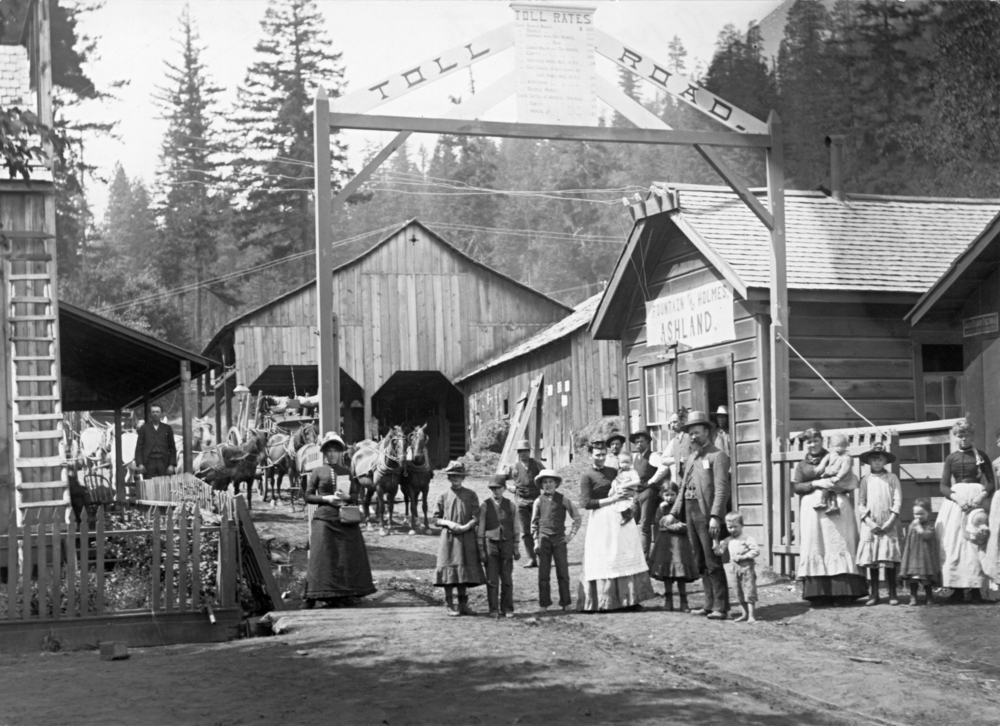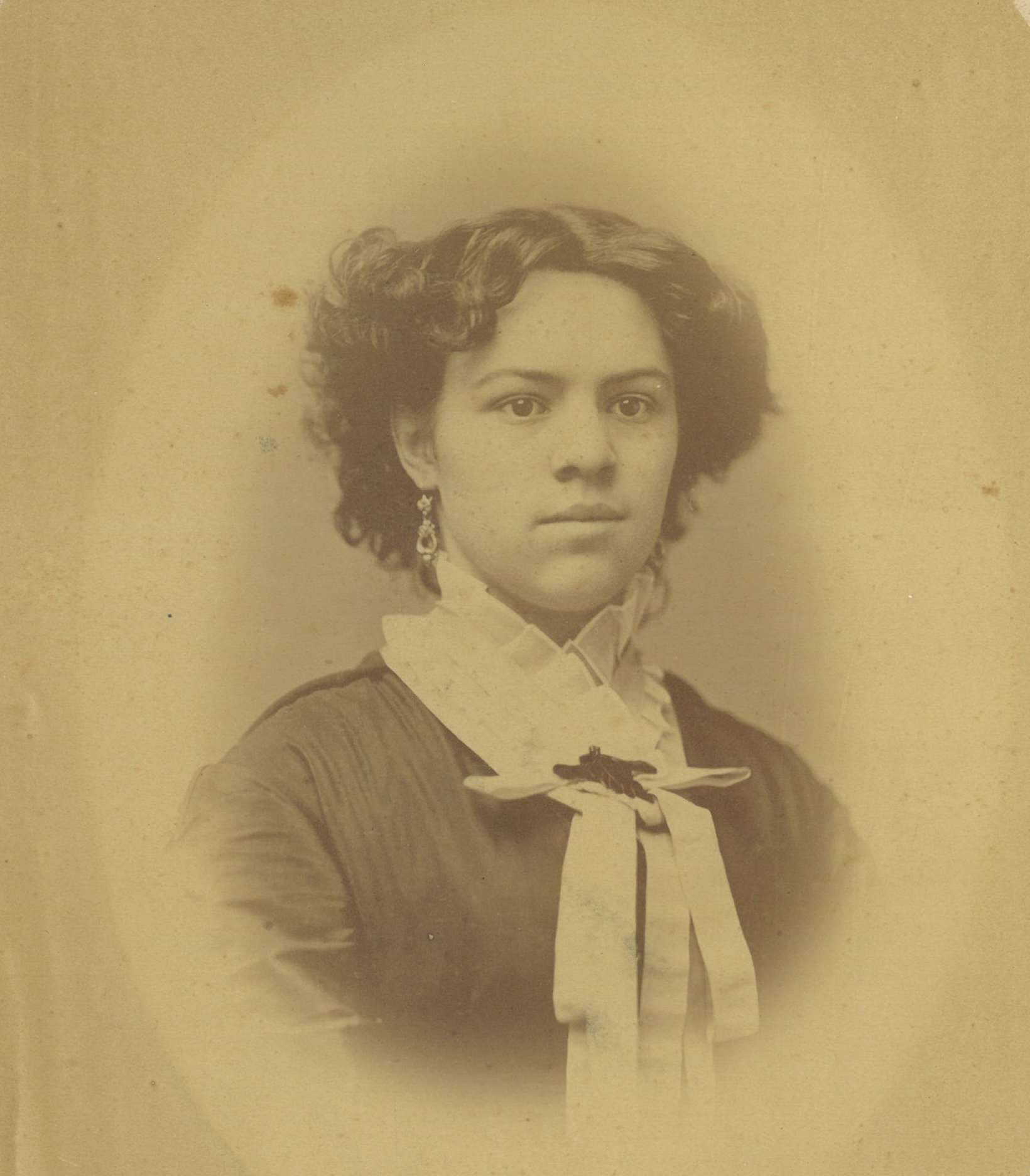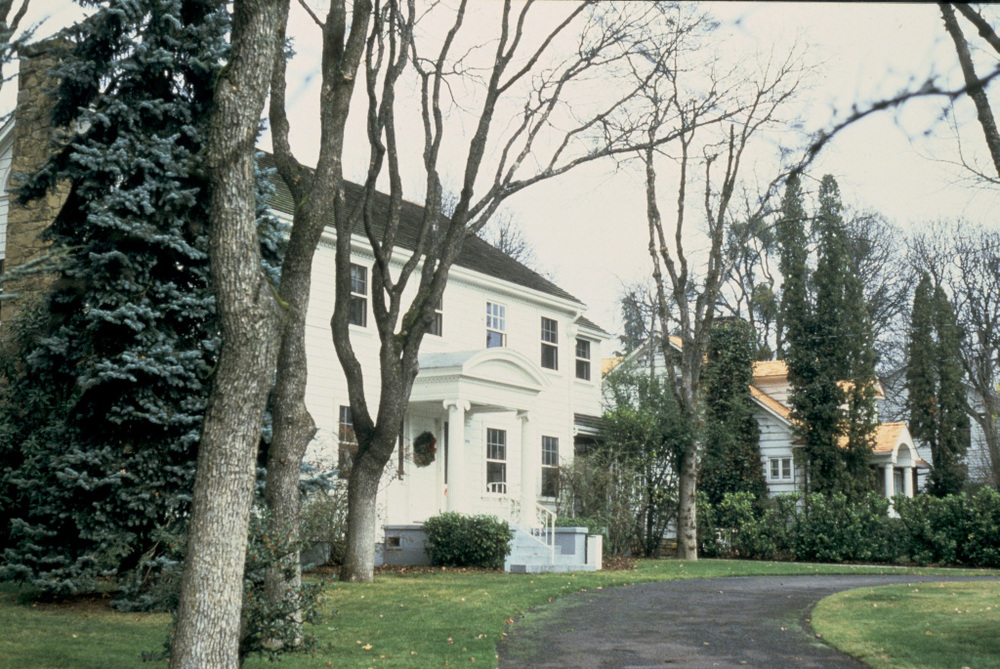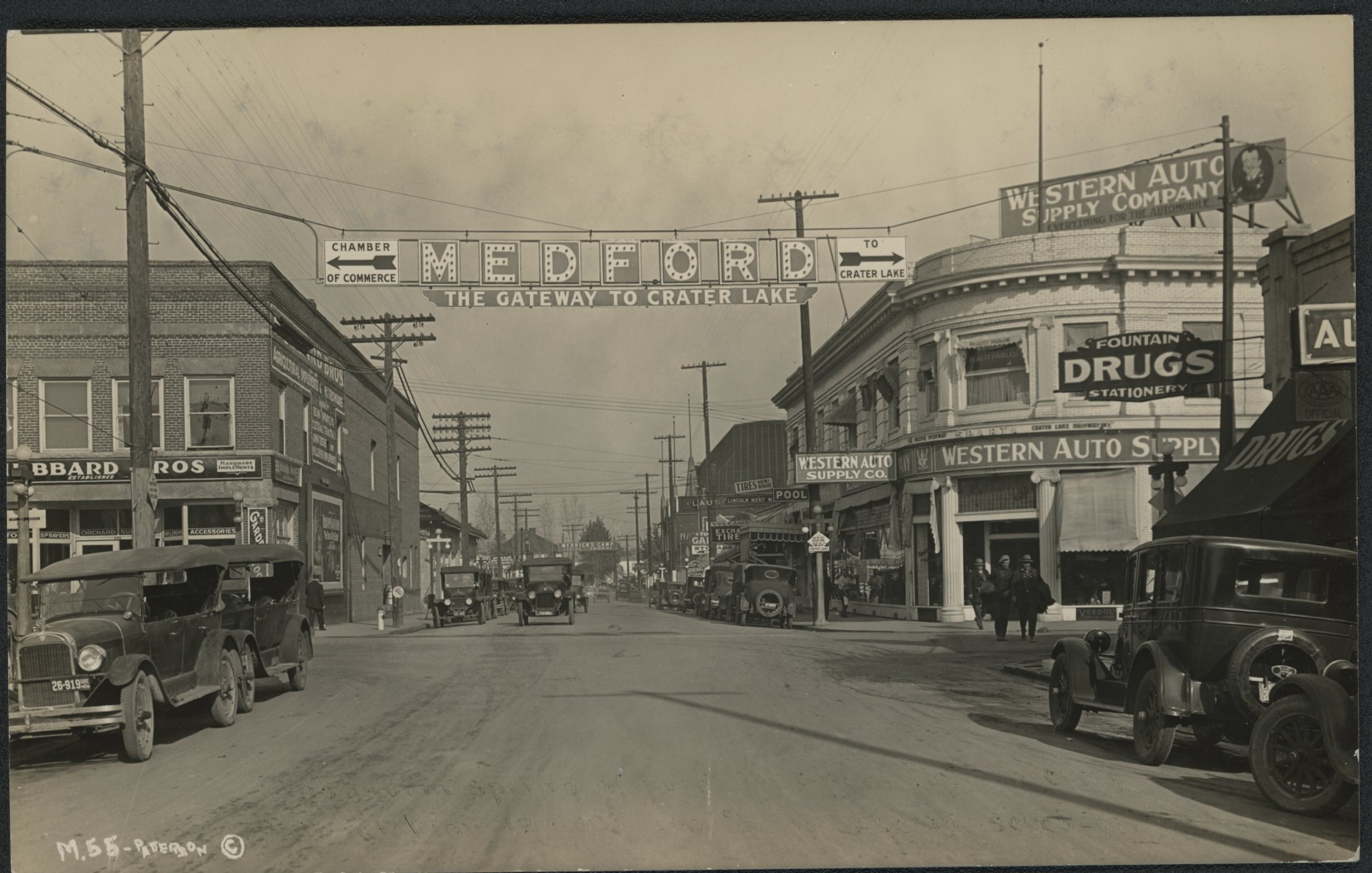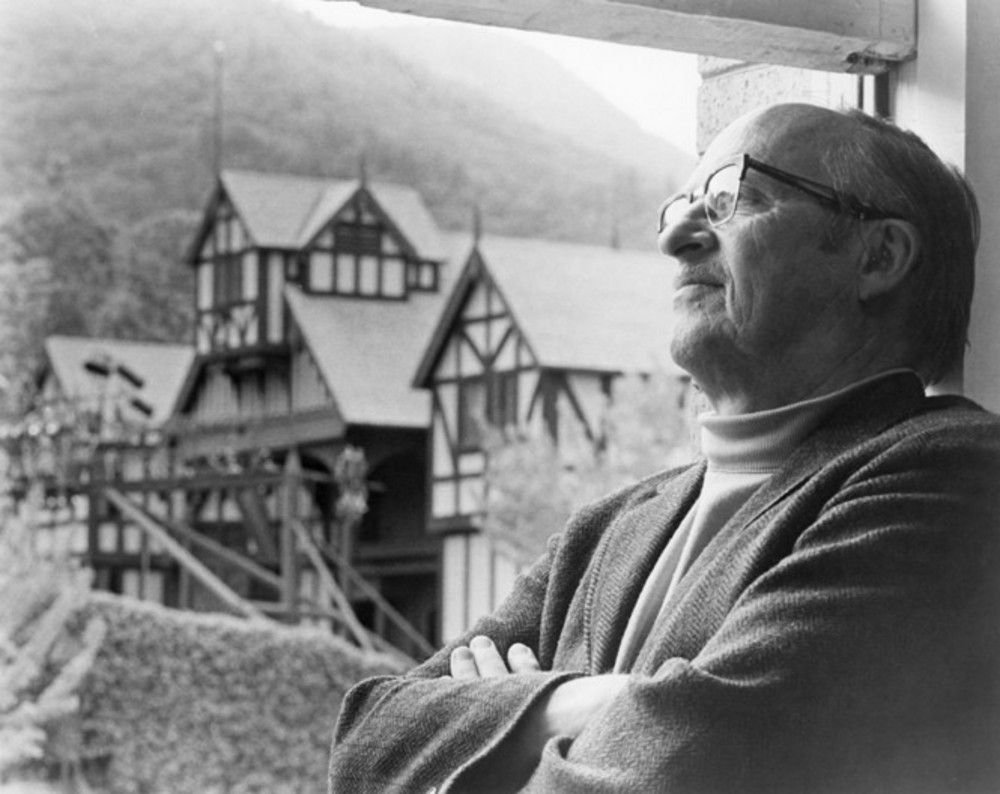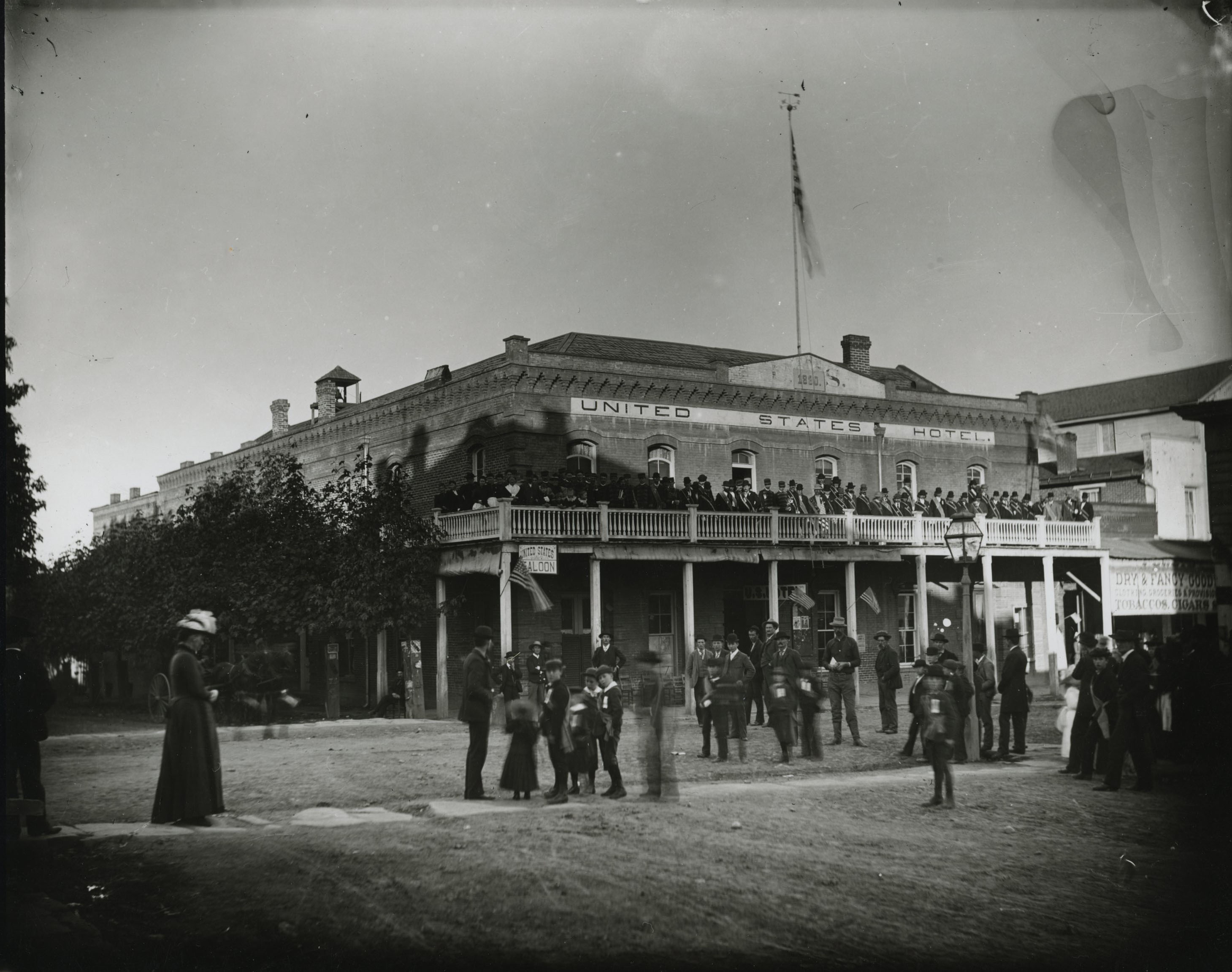Kay Atwood researched and wrote extensively about southern Oregon history, establishing herself as one of the region’s leading historians. Her publications on the area’s orchard history, the Rogue River Canyon, and the founding of Ashland often focused on the “regular” people who did the work. Her books continue to serve as valuable resources on the region’s development.
Katherine Conlee Atwood was born on December 14, 1942, in Bakersfield, California, the daughter of David Stoddard and Helen Reed Atwood. She was educated in public schools before attending Mills College, where she received a bachelor of arts degree in theatre arts in 1964, and the University of California, Davis, where she received a master’s degree in theatre arts in 1966. She moved to Ashland in 1969 to work as an intern with Richard Hay, the principal set designer at the Oregon Shakespeare Festival. At OSF, Atwood met Robertson Collins of Jacksonville, a local philanthropist, preservationist, and community leader who played an important role in Jacksonville’s history-based economic resurgence. Collins recommended Atwood for a position as an exhibit designer for the Southern Oregon Historical Society. It was at SOHS that Atwood found her calling in Oregon history.
Through SOHS and also on her own, Atwood researched and published books on local history. Under contract to the U.S. Forest Service and the Bureau of Land Management, she researched the area’s timber history and the early settlement of the Rogue River Canyon. She also did work for the Jackson County Intermediate Education District, including conducting oral history interviews with locals, which were published as Jackson County Conversations in 1975. As part of the district’s commemoration of the 1976 Bicentennial, Atwood wrote an elementary school curriculum on the history of Chinese, Blacks, and Jews in southern Oregon, among the first efforts to document the contributions of those groups to the area’s nineteenth-century history.
Over her more than three-decade career as a historian, Atwood extensively documented the work of architect Frank Chamberlain Clark, undertook multiple property submittals on USFS Fire Lookouts and Ashland’s Historic Cemeteries, prepared the first historic surveys of Ashland and Jackson and Josephine Counties, and wrote dozens of nominations to the National Register of Historic Places. Illahee: The Story of Settlement in the Rogue River Canyon, which Atwood published herself in 1978, documents the history of mid-nineteenth to early twentieth-century homesteading. Illahee was republished in 2002 and remains an important work on that isolated area.
Other books followed, including Blossoms & Branches (1980), a history of southern Oregon orcharding; An Honorable History (1985), on early medical practice in Jackson County; and Mill Creek Journal (1987), on the founding of Ashland. Her last book, Chaining Oregon: Surveying the Public Lands of the Pacific Northwest, 1851–1855 (2008), is a history of Oregon’s first land surveys and the men who established range and township lines in the state. Many of Atwood’s books are illustrated with her own pen-and-ink drawings and maps and were delivered to bookstores by Atwood’s husband, David Strother, whom she married in September 1982.
Atwood’s skill as a historian and her talent for narrative led to service with several institutions focused on Oregon history. Beginning in 1991, she was a longtime member of the editorial advisory board of the Oregon Historical Quarterly, and she served on the Oregon State Historical Records Advisory Committee, the State Advisory Committee on Historic Preservation, and the board of the Historic Preservation League of Oregon (now RestoreOregon). In 1995, Atwood received the Preservation League’s Ruth McBride Powers Award for lifetime achievement in historic preservation. Her work also was honored with the Southern Oregon Historical Society Heritage Award in 2006.
Kay Atwood died in Ashland on May 24, 2014. Her papers were donated to Southern Oregon University and are available online through the Southern Oregon Digital Archives.
-
![]()
Kay Atwood tells children about Ashland's early families..
Courtesy The Ashland Story book, by Marjorie O'Harra
-
![]()
Kay Atwood, c.2011.
Courtesy Strother photo
Related Entries
-
![Ashland]()
Ashland
Ashland, a city of 21,360 people in Jackson County, is situated in the …
-
![Eva Emery Dye (1855-1947)]()
Eva Emery Dye (1855-1947)
As an impressionable and imaginative girl growing up in Illinois, Eva E…
-
![Frances Fuller Victor (1826–1902)]()
Frances Fuller Victor (1826–1902)
In 1869, the Overland Monthly and Out West Magazine featured "Manifest …
-
![Frank Chamberlin Clark (1872–1957)]()
Frank Chamberlin Clark (1872–1957)
Frank Clark practiced architecture for more than forty years in southwe…
-
![Medford]()
Medford
Medford, the county seat of Jackson County, was platted in 1883 in the …
-
![Oregon Shakespeare Festival]()
Oregon Shakespeare Festival
The Oregon Shakespeare Festival (OSF), under the leadership of Angus L.…
-
![Southern Oregon Historical Society]()
Southern Oregon Historical Society
The Southern Oregon Historical Society (SOHS) collects, preserves, and …
Related Historical Records
Map This on the Oregon History WayFinder
The Oregon History Wayfinder is an interactive map that identifies significant places, people, and events in Oregon history.
Further Reading
"Local Historians Remember Atwood's Impact on Region." Medford Mail Tribune, May 28, 2014.
Atwood, Kay. Blossoms and Branches: A Gathering of Rogue Valley Orchard Memories. Medford, Ore.: Gandee Printing Center, 1980.
Atwood, Kay. Illahe - The Story of Settlement in the Rogue River Canyon. Medford, Ore.: Gandee Printing Center, 1978.
Atwood, Kay. Mill Creek Journal: Ashland, Oregon 1850-1860. Ashland, Ore.: Kay Atwood, 1987.
Atwood, Kay. Chaining Oregon: Surveying the Public Lands of the Pacific Northwest, 1851-1855. Blacksburg, VA: The McDonald & Woodward Publishing Company, 2008.



